Key takeaways
- Activist teacher resources empower educators to inspire critical thinking and empathy by connecting real-world issues to classroom learning.
- Virtual reality (VR) enhances education by turning abstract concepts into immersive experiences, fostering deeper understanding and engagement.
- Effective VR lesson planning includes mapping activities to activism themes, allowing for reflection and discussion to deepen emotional connections.
- Overcoming challenges in VR lessons, such as disorientation and technical glitches, requires preparation, clear instructions, and a focus on reflection to ensure impactful learning experiences.

Understanding activist teacher resources
Activist teacher resources are more than just lesson plans; they are tools that empower educators to challenge the status quo and inspire critical thinking in their students. I remember feeling a mix of excitement and responsibility when I first discovered these resources—they opened my eyes to the potential of education as a force for social change.
Have you ever wondered how much influence a single lesson can have on a young mind? Activist resources guide teachers to weave real-world issues into the classroom, making learning deeply relevant and impactful. From my experience, this approach doesn’t just inform—it sparks passion and empathy.
What strikes me most about activist teacher resources is their adaptability. They can be tailored to fit diverse classrooms and teaching styles, which makes them incredibly powerful. I’ve seen firsthand how these materials foster meaningful discussions and encourage students to think beyond textbooks.
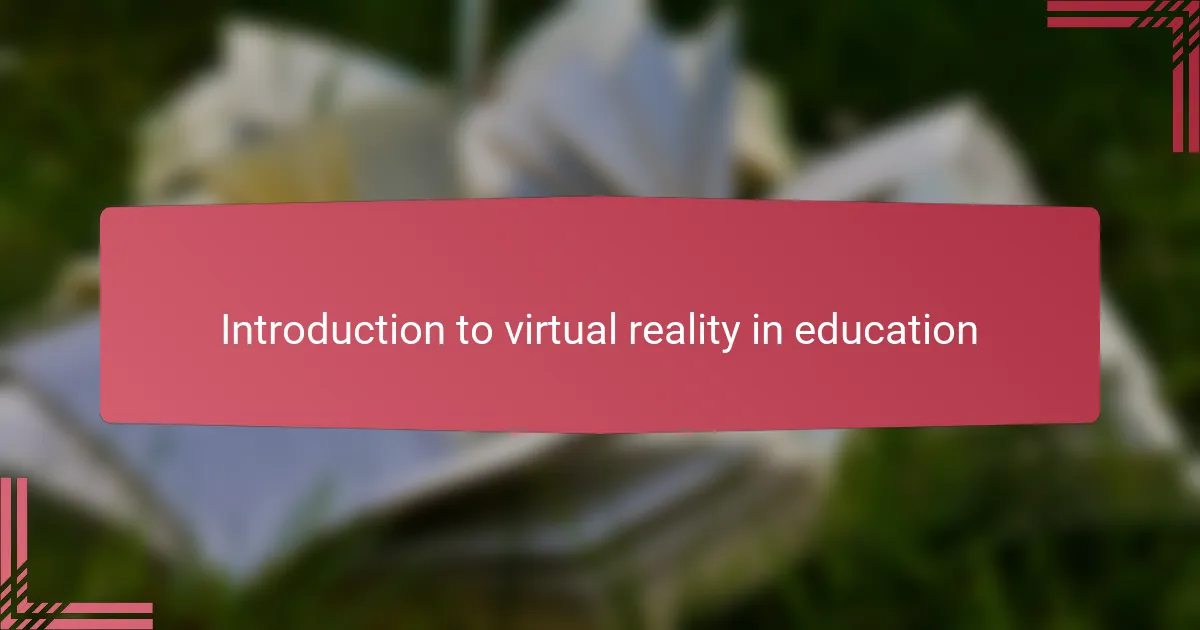
Introduction to virtual reality in education
Virtual reality in education feels like stepping through a doorway into a whole new world. When I first put on a VR headset in my classroom, I was amazed at how instantly it transported both me and my students to places far beyond our school walls. Have you ever wanted your students to truly experience what they’re learning instead of just reading about it? VR makes that possible.
What fascinates me most about VR is its ability to turn abstract concepts into vivid, immersive experiences. In my lessons, this meant students weren’t just passive listeners—they became active explorers. I recall watching their faces light up as they walked through historical landmarks or examined complex scientific processes in 3D; the engagement was unlike anything I’d seen before.
Of course, integrating virtual reality isn’t about flashy technology for technology’s sake. It’s about deepening understanding and fostering empathy by stepping into others’ shoes. For me, VR became a powerful companion to activist teaching, turning lessons into living, breathing stories that students could feel connected to on a deeply personal level.
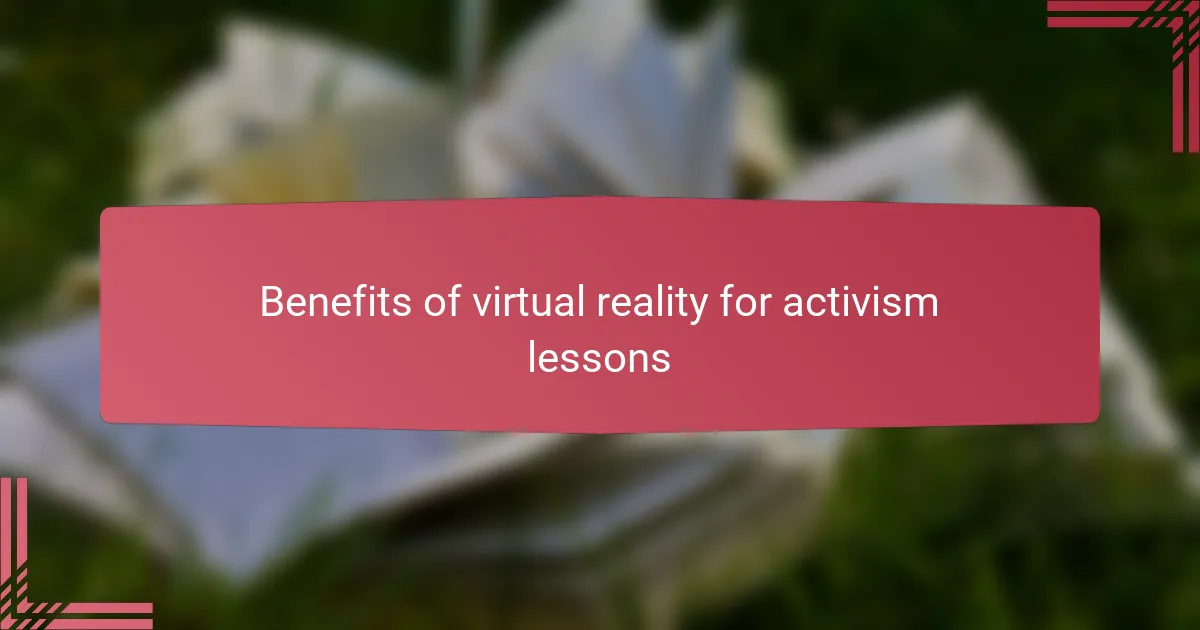
Benefits of virtual reality for activism lessons
One of the biggest benefits I noticed with virtual reality in activism lessons is how it bridges the empathy gap. When students virtually step into the shoes of someone facing injustice, their understanding shifts from abstract sympathy to real, emotional connection. I remember a session where students explored a VR simulation of a refugee camp—seeing their reactions, I knew the lesson had reached far beyond words.
Another advantage that stands out to me is how VR sparks curiosity and invites questions. Instead of passively receiving information, students actively engage with complex social issues through immersive experiences. This kind of engagement made classroom discussions richer and more honest, as students brought their genuine reflections to the table rather than rehearsed responses.
Have you ever struggled to convey the urgency behind activism topics? VR offers a powerful way to overcome that challenge by making distant or invisible struggles tangible. I’ve seen students move from apathy to advocacy, driven by the visceral impact of virtual immersion. It’s a transformative tool that, in my experience, deepens commitment to social justice in ways traditional lessons rarely achieve.
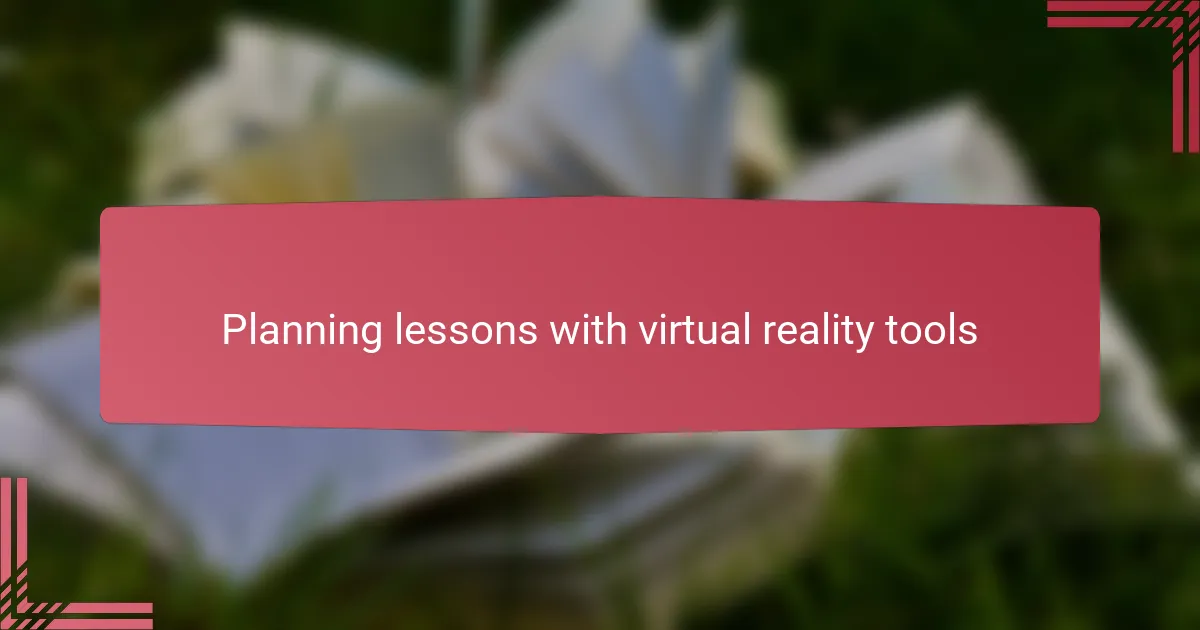
Planning lessons with virtual reality tools
When I started planning lessons with virtual reality tools, I quickly realized that selecting the right VR experience was just as important as the objective of the lesson itself. I asked myself: What do I want my students to feel or understand by the end of this session? This question helped me narrow down immersive environments that truly aligned with the activism themes I wanted to highlight.
Mapping out the lesson flow around VR activities took some trial and error. I found it essential to build in time for reflection—often right after the VR experience—so students could process their emotions and thoughts. For example, after a virtual visit to a historical protest site, I guided my students through a discussion that linked what they saw to present-day activism, making the lesson both immersive and meaningful.
I also made sure to prepare backup plans in case technology hiccups occurred. From my experience, having analogous activities ready not only kept the lesson on track but also showed students that the key goal was learning and engagement, not just the novelty of VR. This preparation gave me confidence and allowed me to focus on facilitating rich conversations sparked by the virtual journeys.
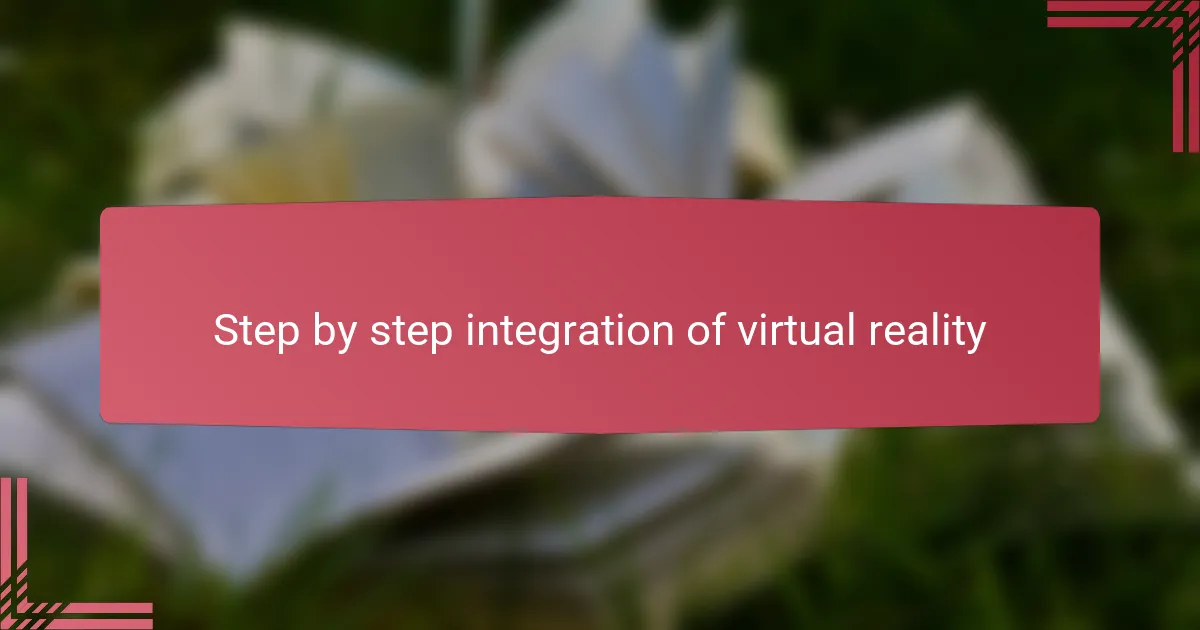
Step by step integration of virtual reality
The first step I took was to introduce the VR experience gradually, starting with short, focused sessions that aligned tightly with my activism themes. Have you ever faced the challenge of balancing technology and content? I found that easing students into VR helped them stay grounded and reflective rather than overwhelmed.
Once students were comfortable, I carefully integrated VR into the core of the lesson, making it the catalyst for discussion and critical thinking. For instance, after a virtual tour of an environmental justice site, I invited students to share their immediate reactions, which often sparked deeper conversations about real-world implications.
Finally, I made reflection and connection mandatory parts of the process. VR isn’t just a show; it’s an emotional journey that needs unpacking. I remember guiding students through writing prompts or group dialogues that helped them translate their virtual experiences into personal insights and activist commitments.
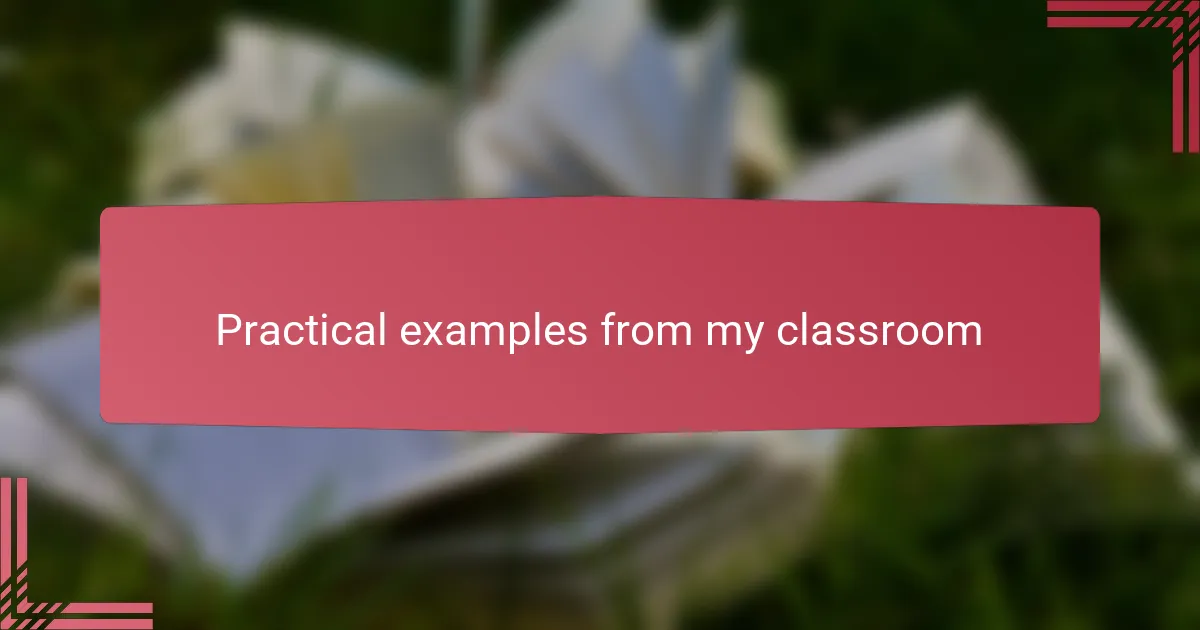
Practical examples from my classroom
One vivid example from my classroom involved a lesson on Indigenous land rights where students donned VR headsets to explore sacred sites in 3D. Watching their expressions shift from curiosity to reverence was unforgettable—it was as if they were physically standing in those places, connecting emotionally in a way no textbook could achieve. Have you ever seen a room go completely silent because something just clicked? That moment stayed with me.
Another time, I used a VR simulation of a climate refugee’s journey to kick off a debate on environmental justice. Students were visibly moved after walking virtually through the hardships faced by displaced families. This empathy fueled a passionate discussion where they challenged policies and proposed solutions. It was clear the immersive experience had deepened their understanding beyond surface-level facts.
I also found success in pairing VR with creative projects. After a virtual tour of a protest, students created digital storytelling presentations that reflected their personal responses. This hands-on extension helped them process what they saw and reinforced the connection between virtual experiences and real activism. Have you tried turning reflection into creation? It can be a powerful way to cement learning.

Tips for overcoming challenges in VR lessons
One challenge I often faced with VR lessons was managing students who felt disoriented or uncomfortable wearing the headset. I learned it helps to start with shorter sessions and provide clear instructions on when and how to pause or remove the device. Have you ever noticed how a little reassurance can make all the difference? Creating a calm environment made students more willing to engage deeply with the experience.
Technical glitches are another hurdle that can throw off the flow of a lesson. From my experience, having backup activities ready and testing equipment well ahead of time saved me a lot of stress. When things didn’t go as planned, I reminded myself—and my students—that the goal was meaningful learning, not flawless tech performance. This mindset eased tension and kept our focus on the content.
Finally, I made reflection time non-negotiable. VR can be emotionally intense, especially in activism lessons, so guiding students through processing their feelings was crucial. I often asked, “What surprised you most about that experience?” This simple question opened doors to honest conversations and helped students translate virtual encounters into personal insights—a step I consider vital for lasting impact.